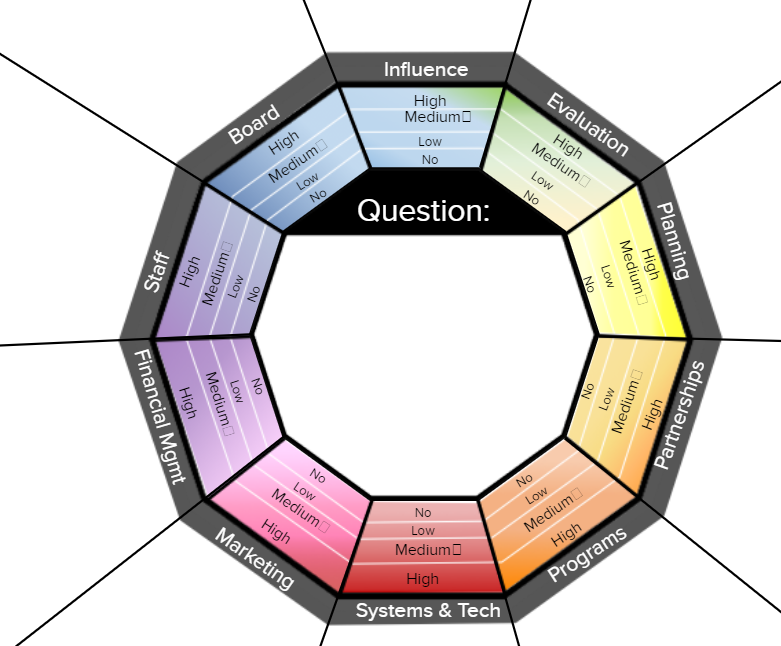Getting Diversity, Equity and Inclusion Off the Sidelines and into the Center of Our Work.
When we think about addressing diversity, equity and inclusion (DEI) in our organizations, we tend to jump to the tactical response of training. Training, such as unconscious bias training, is extremely important. However, if we stop there, we might not make lasting or holistic change. Consider, what happens, when we move DEI to the center of the conversation. Consider in what ways we need to strengthen, adjust and change all of the ways we work, from staffing, to planning, to partnerships, and systems.
When thinking about addressing challenges at the center of our work, See What I Mean often uses a tool called Success Circle. This tool encourages organizations to put a challenge in the middle of the circle and assess how all parts of the organization meet the challenge. It also asks us to think of ways we can improve our performance across functionalities. We believe Diversity, Equity and Inclusion needs to be thought about in every capacity around the wheel, and therefore is a major challenge that belongs in the center of the circle.
Another tension we recognize in DEI conversations is condensing three concepts into one bucket. Diversity, equity and inclusion have different aims and therefore require our specific thinking. Rather than trying to address all three at once, we are going to put one concept in the middle of the circle, “How do we do better at equity?”
For the purposes of this blog we will use the Ford Foundation’s definition of equity, “Equity seeks to ensure fair treatment, equality of opportunity, and fairness in access to information and resources for all. We believe this is only possible in an environment built on respect and dignity.”
Let’s look at a couple of the capacities around the wheel, and think about a few of the questions we might ask when it comes to Equity.
Staff:
Could we review our staffing structure, policies, job descriptions, pay structure etc. to understand where we might reduce racial inequities?
Do we have -or- Can we create a space and format for staff to voice their concerns about racial inequities in the workplace?
Has our staff been trained to a level that they can recognize institutional racism when creating or assessing programs and practices, and understand ways they can address the issues?
Programs:
Have we conducted an assessment of the communities that are underrepresented in participation in our programs? Could that under representation be caused by racial inequities or systemic racism in our design and language?
Have the people impacted by our programs been a part of co-creating the programs with us? How might our program creation practices have embedded racial inequity in the ways they are implemented?
Is there an opportunity for us to give up power and resources to community members to design programs and services?
In each of the capacities around the Success Circle there are questions to ask ourselves about Equity, and Diversity and Inclusion.
At See What I Mean, we are committed to listening, learning and lifting up BIPOC voices in our work. We are always open to helping you ask questions, and providing a tool that can help think through the depth of the challenge. We are committed to creating an actionable plan for how we as a company will use our connections, resources, and skills to advance anti-racism.
You can access the Success Circle tool in our store. If you are an organization that could use this tool, but do not currently have the resources to afford the tool, please reach out and we can provide a discount code. If you want to think more about the questions you might ask, schedule a Discovery Session.
Authors: Jordan Vernoy & Stacy Van Gorp


